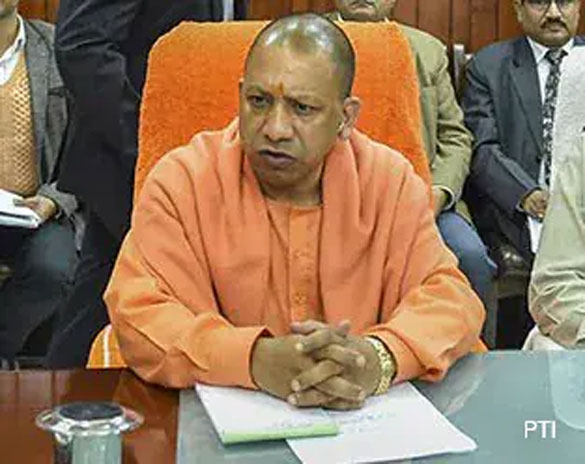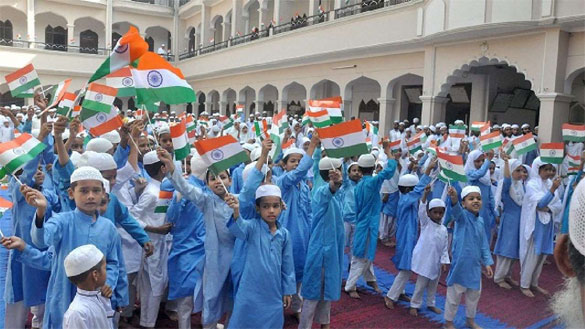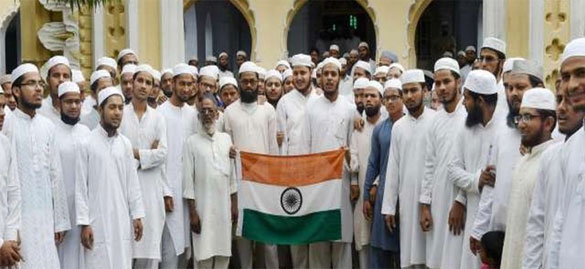
By S. Arshad, New Age Islam
12 September 2020
For centuries, madrasas have acted as centres of Islamic studies. In independent India, a section of Muslim intelligentia stressed the need to modernise madras as centres of holistic education so that students coming out of the madrasas are equipped with the knowledge and skills to make a place in the contemporary society as responsible citizens. In some states a section of madrasas under run under the state governments were indeed functioning as modern Islamic schools with sciences and arts included in their curriculum but still the majority of them vehemently opposed any proposal for modernisation of madrasas.

File Photo of Uttar Pradesh Chief Minister Yogi Adityanath.
------
During the last Congress government, the proposal for the Central Madrasa Board was opposed by Muslims and so it could not be formed. However, the government had implemented the Scheme for Providing Quality Education in Madrasas (SPQEM) as part of the 11th 5-year plan in 2009.

Moradabad: Muslim children hold the tricolour flag during the 71st Independence Day celebrations at a madrasa in Moradabad.
-----
The objective of the scheme was to modernise madrasas by including Sciences, Mathematics, Hindi and English in their curriculum as well as vocational training for Madrasa students. Another objective was to make madrasas accreditation centres of NIOS so that the Madrasa students could join the mainstream education system. These were very useful decisions of the government but the majority of the madrasas were apprehensive that the modernisation of Madrasa system may change their character.
However, in 2017, the Adityanath Yogi government in Uttar Pradesh pushed for the modernisation of madrasas and maktabs in the state according to the SPQEM. It took a number of steps to modernise madrasas, bring transparency in the Madrasa system and make them accountable to the government and to the people.

Representative image/PTI
-----
In August, 2017, the Yogi government launched the web portal of UP Madrasa Board after the government received a number of complaints of irregularities in madrasas. The Minister for Minority Affairs Mohsin Raza claimed that he received complaints that some teachers had got jobs in madrasas with fake documents. Therefore, the government asked all the recognised and aided madrasas to register online on the Madrasa Board's portal giving all the details about their management, teachers and other staff.
There are 19000 recognised madrasas, 4600 partly funded madrasas and 560 fully aided madrasas in Uttar Pradesh. After the launch of the portal only 3000 madrasas registered online out of which 46 did not fulfil all the criteria and so the government stopped grant to these madrasas and the rest of the madrasas were told to register otherwise, they were warned of legal action.
In 2018, the UP government took other decision to make Mathematics, Sciences, Social Studies and Computer mandatory for intermediate level. For that purpose, NCERT books in Urdu will be taught in madrasas. In 2019, the UP government introduced NCC and Scout training in madrasas with the objective of making madrasa students physically strong and eligible for Air Force and military. This step of the government was lauded by Maulana Khalid Rasheed Firangimahli.
A survey of the conditions, infrastructure and education system done at the behest of the MHRD had revealed that most of the madrasas did not have transparency in the appointment of teachers. The appointment of teachers was an internal matter for which the posts were not advertised. The teachers were appointed at the discretion of the managing committee. That's why incompetent teachers were appointed due to nepotism. In many madrasas, computers provided by the government remained useless because of lack of computer teachers and also due to non-commitment of the committee to computer education. In many madrasas, the posts of science teachers were vacant and teachers with degree in Humanities were teaching science. Most of the Madrasa teachers did not have Dl.Ed, B. Ed or M. Ed degree.
Therefore, the UP government also issued advisory that stated the rule that non-Urdu speaking teachers can also be appointed in madrasas.
The state government has also announced a reward if RS 5000 to the meritorious students of madrasas. Every aided madrasa gets Rs 3-4 lakh for salaries of teachers of madrasas.
Although, the SPQEM is running in thousands of madrasas in 18 states in the country, it has been implemented more effectively in four states -------- Uttar Pradesh, Chhattisgarh, Madhya Pradesh and Tripura. In Tripura, madrasa teachers get salary at par with government school teachers.
One important point to be noted here is that the Uttar Pradesh government has reviewed the Madrasa curriculum only to introduce sciences and computer education in madrasas. It does not intend to review the Islamic curriculum. In a statement, Adityanath Yogi had said that closure of madrasas was not the solution. The main goal of his government was to bring madrasas in the mainstream.
In fact, the steps taken by the UP government should have been taken by the Madrasa management itself long ago. English and Hindi should have been included in Madrasa syllabus. English being the official language would assure the students of greater acceptability in job market while learning Hindi would be in accordance with the policy of the Quran which stresses the need to learn the Lisan-e-Qaum, the language of the majority so that they could convey the message of Quran to the non-Muslims and could also communicate with the majority community better in their day to day affairs.
The madrasas should have introduced NCC and Scout earlier because Islam puts emphasis on physical health along with moral health. Computer Science should have been in Madrasa syllabus long ago so that the Madrasa students could progress with other communities. But unfortunately, the madrasas pursued a policy of isolation and exclusivism which was a hindrance in the path of their development.
A section of the Muslim intelligentia has realised the importance of modern education. Therefore, the trend of modern Islamic schools is growing in the sub-continent. In these schools, students study sciences, humanities, computer science along with Islamic subjects. If Muslims had modernised madrasas on their own, they would have not today complained of government interference in madrasas.
Related Articles:
New Age Islam, Islam Online, Islamic Website, African Muslim News, Arab World News, South Asia News, Indian Muslim News, World Muslim News, Women in Islam, Islamic Feminism, Arab Women, Women In Arab, Islamophobia in America, Muslim Women in West, Islam Women and Feminism

No comments:
Post a Comment